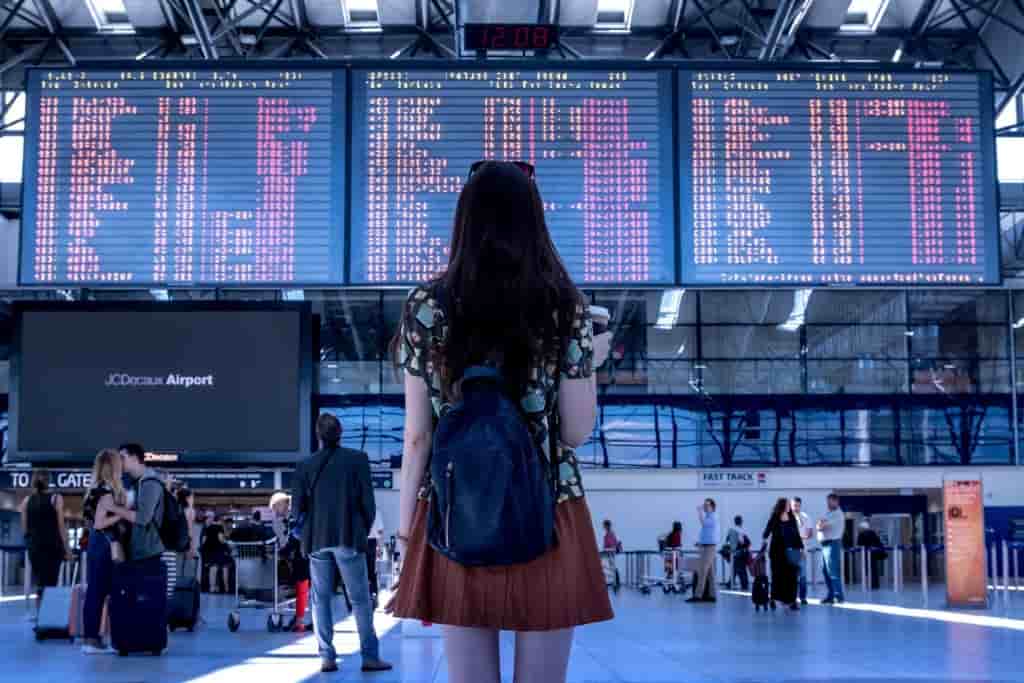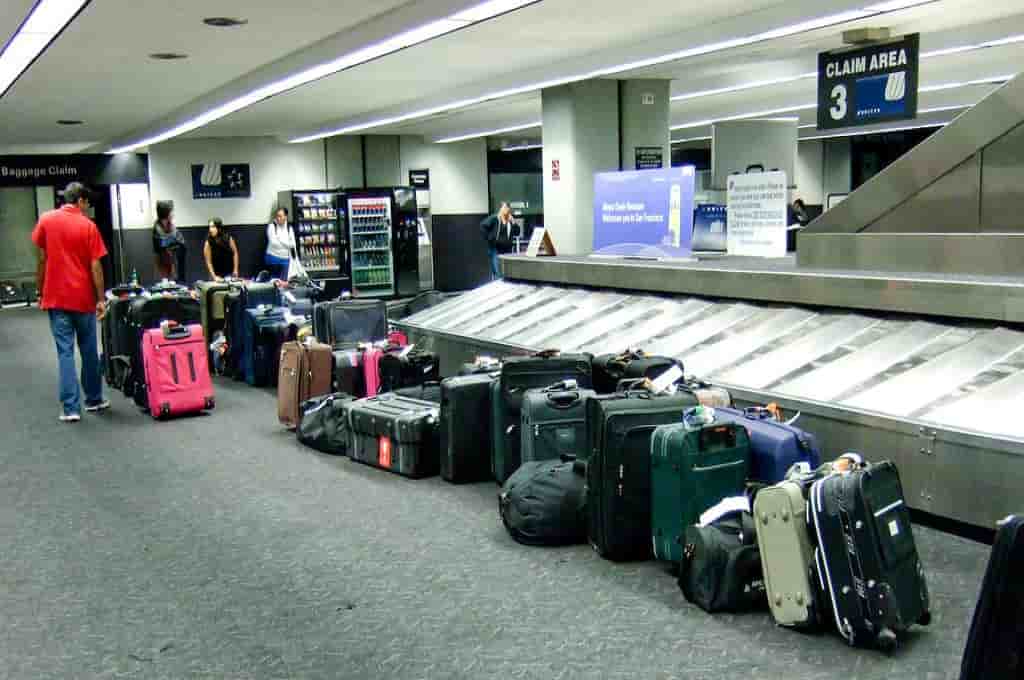Ten Tips to Prevent Lost Luggage
- By Seema
If you travel frequently, you have most likely experienced the nightmare of missing luggage at some point during your travels. Lost luggage complaints have decreased significantly in recent years, yet it still happens. Misplaced luggage can disrupt a well-planned holiday and may result in a loss of time and money. You might be able to cope most of the time, but lost luggage can lead to inconvenience, turmoil, and panic. If you’re planning a trip, why not take a few steps to allow your bags a better chance? While there are no foolproof ways to protect your luggage from getting lost, you can follow a few basic tips which may prevent your bags from getting misplaced and might help in recovering them if they go missing.
1). Fly non-stop or with longer layovers
Traveling nonstop is the easiest way to safeguard your luggage because bags are frequently misplaced in transit. Unfortunately, we can’t always go for this option because of cost or non-availability. The next best alternative is to choose flights with a longer layover to give your luggage and yourself adequate time to get abroad on the next aircraft. When booking connecting flights, avoid layovers of less than 1.5 hours. If your flight is delayed, the airline crew will not have enough time to move your bags from one plane to the next. You’ll rush to your next flight, but your luggage may not make the connection in time. Plan a slightly more extended layover if you have booked the two flights separately. Or, if you are required to retrieve your baggage for customs before boarding the next plane. You need to pick up your luggage at baggage claim and drop it off after following the required procedure. This takes time and you cannot expect to be as quick as the airport staff. Remember all of this while booking tickets.

2). Make Your Luggage Stand Out
Make your bag stand out by using eye-catching details. Purchase suitcases in striking colors or prints, wrap a bright ribbon/duct tape/tag around the handle, apply stickers/patches to the body, or use bold luggage straps – it all depends on your creativity. These simple markings will help you identify your luggage on the carousel among a sea of similar-looking suitcases. Check the tags, even if it seems identical to your bag. By personalizing your luggage, you ensure that none of your fellow travelers grab it by accident. If your luggage goes missing, the unique tags will also act as an identifying mark.
3). Reach on Time
Arrive at the airport with plenty of time to check in your luggage. Checking in at the last minute can be risky for your bags. The rushed process can lead to incorrect tags being placed on your luggage. Don’t forget that bags also pass through many security checks before being loaded into planes. Bags of last-minute passengers would reach the loading bay last, and there might not be enough time to get your luggage on board.
4). Label your Baggage Inside and Outside
Before checking in a bag, label it outside as well as inside. Attach a sturdy baggage tag outside the suitcase with your name, hotel name, email address, and phone number. You can skip the home address. Luggage tags are often ripped off during the rough handling process, so keep a copy of your travel plans inside your luggage. Place it on top where it’s easy to spot. Duct tape a piece of paper or a card with all of the necessary information, including the address and a dated itinerary. This will make it easier for the airlines to locate you and return your luggage faster if it gets misplaced.

5). Tear Off Old Tags
Remove any existing tags, barcodes, or stickers from your luggage before attaching any new tags or labels. Bags are scanned many times during your journey, and old barcodes might mislead luggage scanners with outdated information from previous flights. If the suitcase gets lost, we don’t want it to be re-routed to your prior location. Our goal is to make it simple to identify where the bags are going and keep them on track.
6). Take Some Pictures
Click clear pictures of your bag and keep them with you. If you need to report lost baggage, you can provide a photo of the missing bag to the concerned authorities. This will make it easier for them to locate it. Compile a list of everything in your bag. However, if you are too lazy to make that effort, images will suffice. Snap a picture of the contents of the bag before zipping it shut. It will be useful while filling out the claims form if your bag is never located. Take pics of your baggage-claim ticket as well, just in case you misplace it.
7). Lock Up Your Luggage
When traveling, you run the risk of not only losing your bag but also having your things stolen from your suitcase. Always use TSA-approved locks to secure your luggage. Thieves would target easy-to-open bags and may ignore your locked suitcases. If your luggage goes missing, a lock will keep the contents safe as it passes through multiple hands before reaching you.
8). Get to Baggage Claim as Quickly as you Can
Prior to landing, the flight attendant normally announces the carousel number. Otherwise, you may look it up on the monitors. Try to reach the right baggage carousel as quickly as possible, and keep an eye out for your bag as it comes off the belt. This eliminates the danger of someone picking up your luggage, either accidentally or on purpose.

9). Don’t Overpack Your Bag
Make sure you don’t overpack your bag. When the suitcase is flung around at the airport by the airline workers, it can burst open if it is overstuffed. In such instances, baggage handlers typically place the suitcase aside, resulting in the bag being delayed or lost. Better keeps your bags light and manageable.
10). Upgrade Your Luggage Tag
The use of a GPS-tracked tag to find misplaced luggage is becoming increasingly popular. There are a variety of gadgets available, but most of them consist of a small tag or device and a smartphone app that allows you to track your bags. Add them to your bag and you will receive real-time updates on the whereabouts of your bag during transit and upon arrival. New smart tags are released on a regular basis, so check the reviews and pick one that appeals to you.
Despite this, your bag might still be misplaced or lost. As a result, it is vital that you keep all of your medications, valuables, essentials, and a change of clothes in your carry-on. Consider getting travel insurance.
What to do when your bag is missing?
Don’t panic if your luggage does not show up on the luggage carousel. File a claim right away, and do so before leaving the airport. Locate your airline’s baggage office and report the incident there. You will be asked to fill out forms with all of the necessary information about yourself and your luggage. The more information you provide, the easier it will be to match the bag and deliver it to its intended destination. The bag’s description and contents, as well as your flight route and any other pertinent information, may help in the bag’s recovery. After that, you can leave the airport. The airlines will then search for your bags and, if it is found, send them to your specified address.
Most bags are returned to passengers within 48 hours. If the airlines are unable to locate your luggage, they will try to replace it with the suitcase that is the closest match. The contents of the bag will be monetarily reimbursed. The amount of compensation varies depending on the airline’s policy. Sometimes, you will be compensated for a day’s worth of needs, such as underwear, clothing, and basic toiletries. Keep the receipts for items purchased as they will have to be submitted. You might even be asked to make a list of everything in your bag. Jewelry, artwork, electrical equipment, high-value commodities, cash, and other assets are typically excluded from reimbursement.
